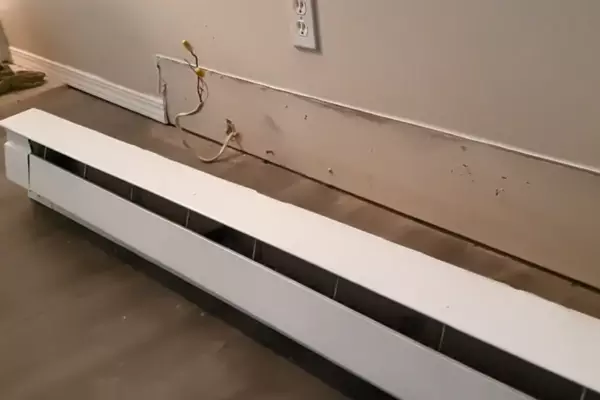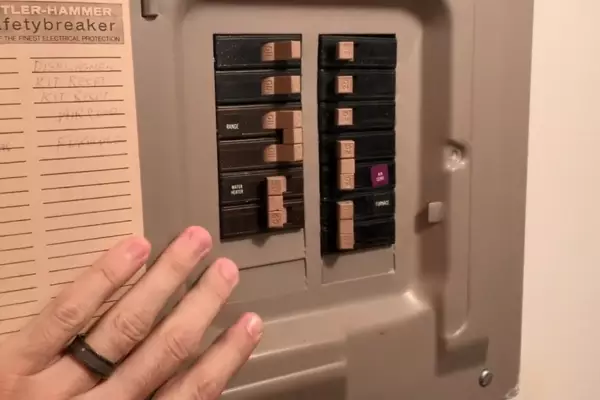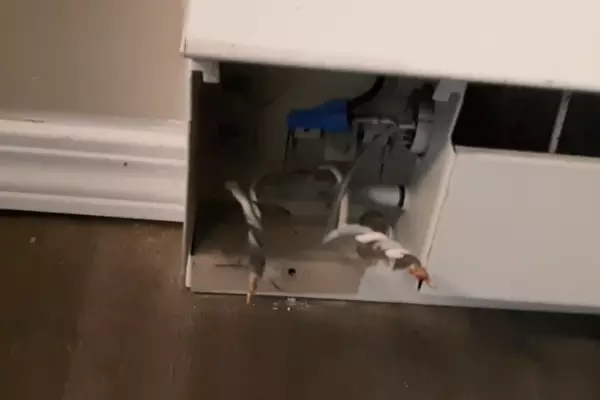The baseboard heater, a common yet often underappreciated feature in many homes, can pose a significant challenge when the time comes for its removal. You may wish to eliminate it for aesthetic reasons, an upgrade, or to clear space for renovations. With the right knowledge, tools, and approach, you can achieve this task smoothly and safely.
Heater removal can be a somewhat complex process, particularly as baseboard heaters come in two main types: electric and hot water. Each type requires specific steps for safe and efficient removal, involving careful disconnection from the home’s power or water supply, respectively.
As an essential part of the home’s heating system, baseboard heaters demand meticulous handling during removal. Their incorrect disassembly could result in damage to the surrounding area or the heater itself, as well as potential safety hazards.
Contents
Types of Baseboard Heaters
Electric Baseboard Heaters
Electric baseboard heaters are standalone units that convert electric current into heat. They are typically easier to remove due to their simple construction and fewer connection points.
Hot Water Baseboard Heaters
Hot water baseboard heaters, on the other hand, form part of a home’s central heating system. They heat rooms by circulating hot water through a system of pipes, making their removal a more complicated procedure.

Tools Required for Baseboard Heater Removal
A Quick List of Necessary Tools
Removing a baseboard heater might seem like a daunting task, but with the right tools, it becomes a manageable endeavor. Essential items that you should have ready include:
- A screwdriver, usually a Phillips or flat-head, depending on the screws used in your heater’s construction. This is used to unscrew the heater from the wall and to expose the wiring.
- A wrench, specifically for hot water baseboard heaters, is used to disconnect the pipes from the heater.
- Wire strippers may come in handy if you need to disconnect wires. They offer an efficient way to cut and strip insulation from the wires without damaging them.
- A voltage tester is an essential safety tool. It is used to confirm that no current is flowing through the wires connected to the baseboard heater before starting the removal process.
Safety Measures During Use
It’s essential to follow safety procedures while using these tools. Always switch off the circuit breaker before starting the removal process. With your protective gloves and safety goggles on, use a voltage tester to ensure no current is flowing through the wires connected to the baseboard heater. This will protect you from electrical shocks, which could lead to serious injuries.
Steps to Remove Baseboard Heater
Pre-removal Safety Checks
Before starting the removal process, there are some critical safety measures to consider. First, ensure your baseboard heater is switched off and has had time to cool down. Dealing with a hot heater can result in severe burns. Also, make sure your work area is clean and free from any tripping hazards.
Removing Electric Baseboard Heaters
For electric baseboard heaters, you’ll follow a specific series of steps:
- Switch off the circuit breaker: This action disconnects the power supply to the heater, ensuring it’s safe to work on.
- Remove the heater’s cover: Use your screwdriver to unscrew the cover, which will expose the wiring inside the heater.
- Test the wires: With your voltage tester, confirm that there’s no current running through the wires. This step is a crucial safety measure to prevent any accidental shocks.
- Disconnect the wires: Use your wire strippers to disconnect the wires. They’re usually secured with wire connectors, which you can unscrew easily.
- Unscrew the heater from the wall: Finally, using your screwdriver, carefully remove the screws holding the heater to the wall, then gently lift it out.

How to Remove Hot Water Baseboard Heater
Removing a hot water baseboard heater involves a few more steps due to its connections to the home’s plumbing system:
- Switch off the boiler: You’ll need to halt the flow of hot water through the system to safely remove the heater.
- Drain the system: Draining ensures no water remains in the pipes, preventing any potential water damage during the removal process.
- Disconnect the pipes: Using a wrench, gently disconnect the pipes from the heater.
- Unscrew the heater from the wall: Like with the electric heater, use your screwdriver to remove the screws holding the heater to the wall. Then, carefully lift it out.
Practical Tips for Effective Removal
During the removal process, it’s essential to handle the heaters and their components gently to avoid causing damage. If you encounter any difficulties or uncertainties, it’s a good idea to have a professional on speed dial.
How to Remove Baseboard Heater Cover
The Importance of Heater Cover Removal
Heater covers serve a crucial role in protecting the heating elements from dust and potential damage, while also keeping them out of sight for aesthetic purposes. Therefore, before you can remove the heater itself, you first need to remove the cover.
A Step-by-step Guide to Removing Heater Covers
- Unscrew the cover: Using your screwdriver, remove the screws holding the cover in place.
- Lift off the cover: With the screws removed, you can then gently lift the cover off the heater. Be careful during this step to avoid damaging the heating elements underneath.
Disposing of Old Baseboard Heaters
Responsible Disposal Tips
Proper disposal of old baseboard heaters is important for environmental responsibility. Consult your local waste management rules to see if your old heaters are classified as hazardous waste. Some areas require special disposal methods for such items, while others may allow regular disposal.
Options for Heater Recycling or Donation
If your old heater is still in good working condition, consider donating it to a local charity, selling it, or offering it for free online. This way, you’re giving the heater a second life while also reducing waste. Alternatively, some recycling centers accept old heaters. The components, like metal and wiring, can often be recycled, helping to conserve resources.

Cost to Remove Hot Water Baseboard Heater
Average Removal Costs and Factors Affecting It
The cost to remove a hot water baseboard heater can vary depending on several factors. For instance, the size and location of the heater can affect the cost – larger heaters or those installed in hard-to-reach areas might require more time and effort to remove. Furthermore, whether you choose to do it yourself or hire a professional will significantly influence the cost. While DIY removal can be cheaper, it requires a certain level of skill and comfort with tools. On average, removal costs can range from $50 to $300.
Ways to Cut Down Removal Expenses
To reduce costs, you might opt for DIY removal. However, if you choose this route, ensure you are confident in your skills and have the necessary tools. Remember that attempting to remove a heater without the right skills can lead to property damage or personal injury, which could end up costing you more in the long run.
After-removal Considerations
Baseboard Repair and Cleaning
After removal, you may need to repair any damages to the baseboard and surrounding areas. This could involve filling holes where the heater was screwed in, repainting the wall, or replacing sections of the baseboard. Additionally, cleaning the area can help remove any dust or dirt left behind during the removal process.
Options for Replacing Old Baseboard Heaters
If you’re replacing your old heater, consider more energy-efficient options. This not only lowers your utility bills but also contributes to environmental conservation.
Frequently Asked Questions
What Safety Precautions Should I Take When Removing a Baseboard Heater?
Always switch off the power or water supply before beginning the removal process. Wear protective gloves and safety goggles, and handle the heater gently to prevent damage.
Can I Remove a Baseboard Heater Myself?
Yes, with the right tools and steps, you can remove a baseboard heater yourself. However, if you’re uncomfortable or unsure, hiring a professional is recommended.
How Do I Dispose of My Old Baseboard Heater?
Contact your local waste management authority to find out how to properly dispose of your old heater. Recycling or donating are also viable options if the heater is still functional.
Conclusion
Removing a baseboard heater, though not an everyday task, is achievable with the right knowledge and tools. Whether you opt for a DIY route or engage a professional, the aim is safe and efficient removal.
The process may be a bit daunting for some, but with due diligence, it can be completed without undue stress. This task can help in sprucing up your living space or making way for more efficient heating systems.
Thus, as you embark on this journey of heater removal, remember to prioritize safety and efficiency. This way, you’ll accomplish your goal while also maintaining the integrity of your home and heating system.

